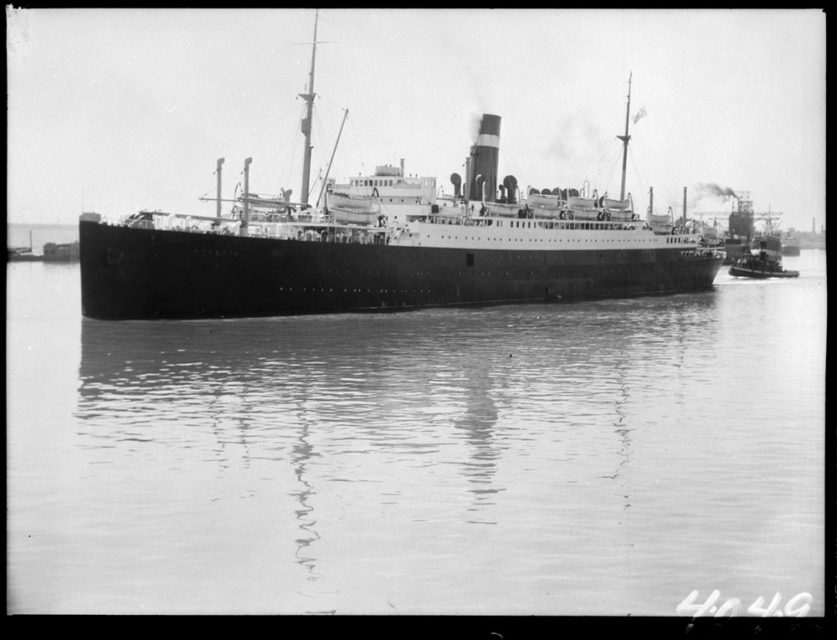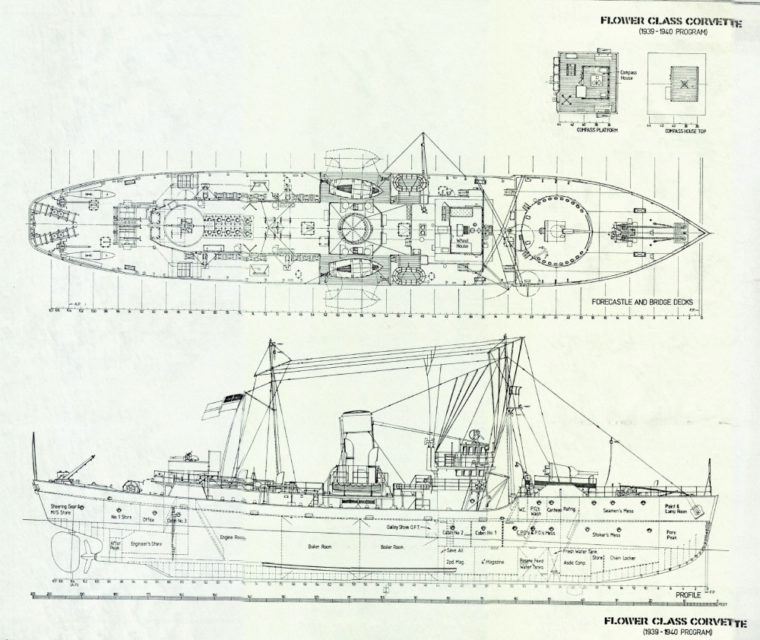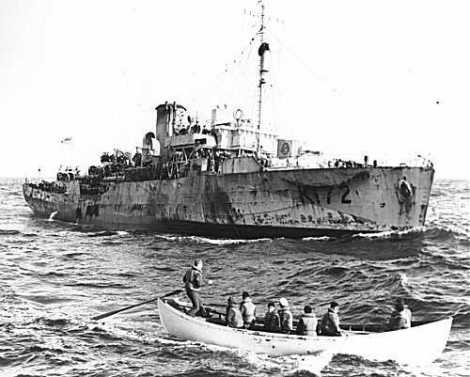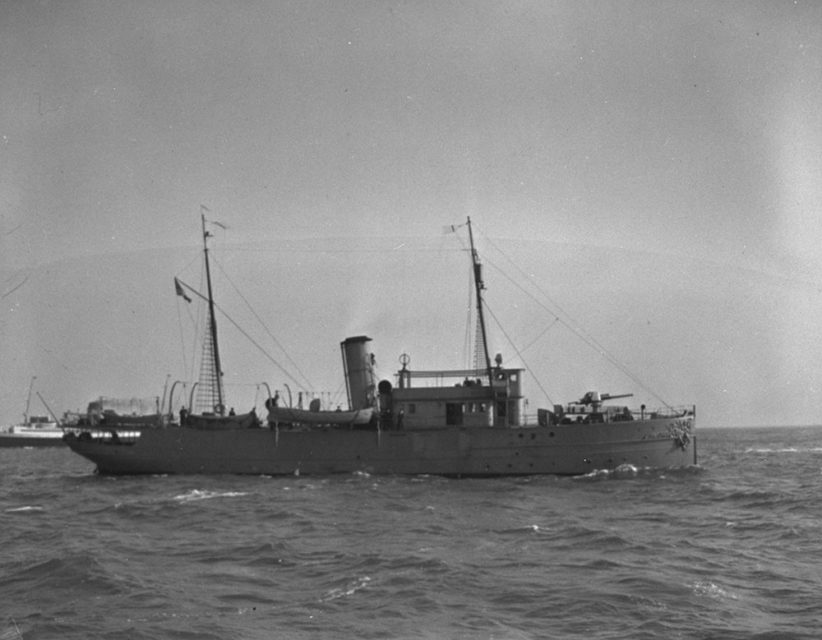The Tank Museum
Published on 10 Feb 2018Welcome to the first in the Tank Chat Funnies mini-series!
In Tank Chats #45 David begins a series on one of his personal interests, the Funnies of the 79th Armoured Division. However the 79th and its Funnies would have been nothing without its inspirational leader Major General Percy Hobart, so David starts with the man and we promise will follow very shortly with his machines.
Support the work of The Tank Museum on Patreon: ► https://www.patreon.com/tankmuseum
Or donate http://tankmuseum.org/support-us/donateVisit The Tank Museum SHOP: ►https://tankmuseumshop.org/
Press the little bell above to enable NOTIFICATIONS so you don’t miss the latest Tank Museum videos.
Twitter: ► https://twitter.com/TankMuseum
Tiger Tank Blog: ► http://blog.tiger-tank.com/
Tank 100 First World War Centenary Blog: ► http://tank100.com/ #tankmuseum #tanks
April 3, 2019
Tank Chats #45 Major General Sir Percy Hobart | The Funnies | The Tank Museum
QotD: Veganism has its drawbacks
Evangelical vegans will tell you that following a purely ‘plant-based’ diet is not only morally commendable, it’s also much better for your health. But if my experience is anything to go by, the opposite is true.
I felt absolutely fine for the first few days. I didn’t miss meat at all, certainly not in terms of taste or flavour. The only thing I really felt an absence of was eggs. Since I embarked on my mammoth weight-loss project, eggs have become a dietary staple for me: nothing fills me up as well or gives me quite as much long-lasting energy as an egg.
I also found I had to eat larger portions to feel full — and I felt hungry again after a shorter period of time. But even that didn’t bother me, since what I was eating was so wholesome.
No, the real issue became apparent after the third or fourth day. Not to put too fine a point on it: wind.
My stomach was, quite literally, in ferment. All those legumes and pulses and generalised vegetable matter appeared to have turned into a giant internal compost heap. It wasn’t too bad in the mornings; but by early afternoon I was like a cow who had overdosed on clover.
At first, I palmed the outcome off on our three dogs. But after a while the problem became so severe that even they could not be expected to account for the frequency and potency of aromas emerging from my lower digestive tract.
One of the key arguments of vegans against livestock farming is the harm animals cause to the planet through the amount of methane they produce; if my experience was anything to go by, a vegan human is capable of producing just as much, if not more. I was a one-woman global warming hazard.
My children, of course, thought it was hilarious. But from my point of view, it was not only unpleasant and occasionally embarrassing, it was also incredibly uncomfortable. I felt bloated, soggy and sluggish, and began to dread meal times.
Following the advice of the nutritionist, I took to soaking nuts, oats and seeds overnight. But it made no difference. If anything, the problem began to get worse. The more healthy vegan food I put into my body, the worse my stomach problems became.
As for the much-vaunted ‘vegan glow’, no sign. Instead, my skin felt dry and dehydrated, and there was a distinctly greyish tinge to my complexion. But still, I persisted.
Sarah Vine, “Going vegan sent me off my trolley! Exhausted, irritable and don’t even start of the tummy troubles – SARAH VINE’s bid to join the health revolution left her VERY green around the gills”, Daily Mail, 2019-02-22.
April 2, 2019
James May’s Things You Need To Know – Series 2 – Episode 5 – Engineering (S02E05)
Uninsulated Crimp
Published on 10 Apr 2013James May gives a straightforward guide to some of science’s big ideas, explaining everything from evolution and Einstein to engineering and chemistry.
The not-so-ancient extinction of Madagascar’s megafauna
At The Conversation, Nick Scroxton, Laurie Godfrey, and Stephen Burns discuss their new theory on the megafauna extinction in Madagascar just over a thousand years ago:
Giant 10-foot-tall elephant birds, with eggs eight times larger than an ostrich’s. Sloth lemurs bigger than a panda, weighing in at 350 pounds. A puma-like predator called the giant fosa.
They sound like characters in a child’s fantasy book, but along with dozens of other species, they once really roamed the landscape of Madagascar. Then, after millions of years of evolution in the middle of the Indian Ocean, the populations crashed in just a couple of centuries.
Scientists know that over the past 40,000 years, most of Earth’s megafauna – that is, animals human-size or larger – have gone extinct. Woolly mammoths, sabre tooth tigers and countless others no longer roam the planet.
What’s remarkable about the megafaunal crash in Madagascar is that it occurred not tens of thousands of years ago but just over 1,000 years ago, between A.D. 700 and 1000. And while some small populations survived a while longer, the damage was done in a relatively short amount of time. Why?
Over the last three years, new investigations into climate and land use patterns, human genetic diversity on the island and the dating of hundreds of fossils have fundamentally changed scientists’ understanding of the human and natural history of Madagascar. As two paleoclimatologists and a paleontologist, we brought together this research with new evidence of megafaunal butchery. In doing so we’ve created a new theory of how, why and when these Malagasy megafauna went extinct.
Many of the forests that originally existed on Madagascar are now replaced by more open, human-modified landscapes, like this palm savanna at Anjohibe.
Laurie Godfrey, CC BY-ND
How Trains Changed China | Stuff That I Find Interesting
Jabzy
Published on 27 Mar 2016Thanks to Xios, Alan Haskayne, Lachlan Lindenmayer, William Crabb, Derpvic, Seth Reeves and all my other Patrons. If you want to help out – https://www.patreon.com/Jabzy?ty=h
Music by Derek Fiechter – https://www.youtube.com/channel/UCVRJ…
QotD: The legacy of the soixante-huitards
It is one of the theses of this lucid book that the generation of May 1968 — or at any rate its leaders — has arranged things pretty well for itself, though disastrously for everyone else. If it has not been outright hypocritical, it has at least been superbly opportunist. First it bought property and accumulated other assets while inflation raged, paying back its debts at a fraction of their original value with depreciated money; then, having got its hands on the assets, it arranged for an economic policy of low inflation except in the value of its own assets. Moreover, it also arranged the best possible conditions for its retirement, in many cases unfunded by investment and paid for by those unfortunate enough to have come after them. They will have to work much longer, and if ever they reach the age of retirement, which might recede before them like a mirage in the desert, it will be under conditions much less generous than those enjoyed by current retirees.
It matters little whether this was all part of a preconceived plan or things just fell out this way, for that is how things now are. The result is that what was always a class society is in the process of becoming a caste society, in which only children of the already well-off have a hope of owning their own house.
Theodore Dalrymple, “Beneath Paris”, Taki’s Magazine, 2017-01-07.
April 1, 2019
Canada and the Battle of the Atlantic, part 5 by Alex Funk
Editor’s Note: This series was originally published by Alex Funk on the TimeGhostArmy forums (original URL – https://community.timeghost.tv/t/canada-and-the-battle-of-the-atlantic-part-2-edited/1434).
Sources:
- Far Distant Ships, Joseph Schull, ISBN 10 0773721606 (An official operational account published in 1950, somewhat sensationalist)
[Schull’s book was published in part because the funding for the official history team had been cut and they did not feel that the RCN’s contribution to the Battle of the Atlantic should have no official recognition. It is very much an artifact of its era, and needs to be read that way. A more balanced (and weighty) history didn’t appear until the publication of No Higher Purpose and A Blue Water Navy in 2002, parts 1 and 2 of the Official Operational History of the RCN in WW2, covering 1939-1943 and 1943-1945, respectively.]- North Atlantic Run: the Royal Canadian Navy and the battle for the convoys, Marc Milner, ISBN 10 0802025447 (Written in an attempt to give a more strategic view of Canada’s contribution than Schull’s work, published 1985)
- Reader’s Digest: The Canadians At War: Volumes 1 & 2 ISBN 10 0888501617 (A compilation of articles ranging from personal stories to overviews of Canadian involvement in a particular campaign. Contains excerpts from a number of more obscure Canadian books written after the war, published 1969)
- All photos used exist in the Public Domain and are from the National Archives of Canada, unless otherwise noted in the caption.
I have inserted occasional comments in [square brackets] and links to other sources that do not appear in the original posts. A few minor edits have also been made for clarity.
Part 5 — The RCN’s desperate need for warships
Marc Milner picks up the story in North Atlantic Run:
The first year of the war at sea developed as Allied planners had anticipated. Germany’s U-boat fleet was small and remained so. Its operational strength of forty-six submarines (only twenty-two of which were capable of deep sea work) was far short of the three hundred U-boats that Rear Admiral Karl Dönitz, Befehlshaber der U-boote (BdU; commander-in-chief of U-boats), estimated he needed to sever Britain’s supply lines. Moreover, the U-boat fleet was initially circumscribed by Allied control of the exits from the North Sea. In the early months of the war U-boat captains generally obeyed their strict instructions not to anger neutral opinion through rash and illegal acts, despite their torpedoing of the liner Athenia on the first day of the war, which suggested that Germany would again adopt unrestricted submarine warfare. So the Allies concentrated on Germany’s powerful surface fleet, on her commerce raiders lurking in disguise on the oceans of the world, and on hapless offensive anti-submarine (A/S) sweeps.
The convoys were organized from the first days of the war and had some escort vessels, but the U-boats were not yet operating at full potential — this would become blatantly evident later — and the relatively few escorts were not hard pressed to keep the merchant ships safe in passage.

S.S. Athenia, at Montreal in 1933. She was torpedoed on the very first day of World War 2 by U-30 northwest of the coast of Ireland. Of the 1,103 passengers and 305 crew aboard, 118 were lost in the sinking (including 28 Americans).
Clifford M. Johnston / Library and Archives Canada / PA-056818
Through the spring and early summer, the U-boats operated mainly between Britain and Iceland; while they achieved nothing spectacular in terms of Allied tonnage sunk, the escort ships scored few victories in return. In one three-hour hunt HMCS St. Laurent and the RN destroyer Viscount dropped 80 depth charges in attacks on a submerged U-boat; when diesel oil bubbled to the surface they were sure they had gotten a kill. The Admiralty, cautious to award kills even in the early days, credited them with a “probable”.
Although Germany was now able to make good use of well-sited and easily defended new submarine bases on the Atlantic coast of France and to begin developing new tactics, it did not shake Allied belief that the U-boat threat had been rendered ineffective by ASDIC, convoys, and airpower.
Indeed, in a book on Modern Naval Strategy published by Admiral Sir Reginald Bacon, RN, and F.E. McMurtrie, two well-respected naval theorists, submarine attack on an escorted convoy was given little chance of success. Supposing the submariner could find the convoy in the first place, his distorted view of the world through a periscope was considered a grave handicap. With a periscope exposed in broad daylight — the only time, the authors believed, that an attack was possible — the submarine invited swift retribution from both escort and merchant vessel alike. Moreover, it was still generally believed that once a submarine was locked in ASDIC’s grip, destruction would follow from carefully placed depth charges. This view of anti-submarine sarfare (ASW) was utterly shattered by the Germans’ resourceful use of the U-boat in the second winter campaign on the sea lanes.
In practice, ASDIC was nowhere near perfect, and neither was depth charge placement especially when employed by Canadian escort ships — the inexperience of the majority of Canadian sailors played a role, as did their older and less sophisticated ASDIC sets. There were not enough escorts to protect convoys against multiple attackers, and air power was only available close to land and it proved not to be as capable as the Allied planners had hoped.
Air assets were so rare that the later war “mid-Atlantic air gap” did not exist because few of the necessary air bases that would be built by the end of the war were in place or even under construction yet. Canada’s pre-war air force was small, and though it was growing rapidly, it was not equipped or trained for ASW. The RAF had needed almost every available pilot during the Battle of Britain, and many pilots had been killed or wounded. Germany continued to build more U-boats, building at a far faster pace than Allied ASW forces could sink them, and now with far greater deployment flexibility than they had enjoyed during the First World War.
Marc Milner discusses the RCN’s expansion woes:
Fundamental to the whole problem of expansion was the availability of ships, and here too the RCN’s plans in the early days were never reliable. To upgrade local defences, to replace decrepit auxiliary vessels, and to provide A/S “strike forces”, the RCN had to undertake a modest shipbuilding program beyond that proposed in the pre-war plans. To round out local defences and the like it was decided in early September 1939 to build Bramble-class sloops and a small number of minesweepers. Further consideration was also given to the acquisition of Tribal-class destroyers. But the coming of war so early in the navy’s planned expansion threw it into serious disarray. Tribals could not be built in Canada without considerable assistance from British firms, and with British industry now fully absorbed in war work little help could be expected. Unfortunately, the RCN rejected a very sensible British suggestion that it seek expertise in naval ship construction in the United States. The Canadian navy also failed, initially, to obtain permission to place orders for Tribals in British yards. Faced with an almost impossible dilemma, the Naval Staff hit upon the idea of bartering less-sophisticated Canadian-built warships for British-built destroyers. The scheme had all the advantages of specialization. It permitted Canada to turn products from less-skilled manufacturers into high-value, long-term investments. For the government it meant good business and the possibility of future orders. For the RCN it meant the fulfillment of its expansion plans.
HMCS Cartier, later re-named HMCS Charny, in October 1940. An old Canadian Hydrographic survey vessel from 1910 pressed into service. Used for Naval Training and Naval Mine Avoidance Navigation.
Canada. Dept. of National Defence / Library and Archives Canada / PA-104169As the Naval Staff sorted through the problems of destroyer acquisition, it also tackled the question of what type of auxiliary warship to build for its own purposes and what type to build for bartering. Initial hopes of building sloops were dashed by the news that Canadian yards were incapable of building even small warships to naval standards. As the problem was being discussed, basic plans for a much simpler auxiliary ship arrived at Naval Service Headquarters (NSHQ) from the National Research Council (NRC), which had acquired plans for “whale-catchers” in July during a fact finding trip to the UK. The whale-catchers immediately appealed to the Naval Staff as a workable substitute for sloops, given that they were intended to be auxiliary vessels for inshore duty. Moreover, their mercantile construction was ideally suited to Canadian yards, and British adoption of this class made them suitable for bartering.
Once agreed that corvettes (as the whale-catchers were called by early 1940) were to be built as the navy’s primary A/S ship and as the means whereby larger vessels might be acquired, the Naval Staff had to decide how many to produce.
[Editor’s Note: The development of the corvette goes back to a WW1 proposal for a submarine-hunting ship based on the design of whaling ships. In 1936, Smiths Dock Company of Middlesbrough built the whaling ship Southern Pride (displacing 700 tons, with a top speed of 16 knots), and eventually the design was adapted into a naval escort, the Flower-class corvette, that became the backbone of the convoy escort fleet. I’ve always been fascinated by the Flowers, as they originated in my home town and my maternal grandfather worked for Smiths Dock throughout the war as a plater (he very likely worked on several corvettes in that time). In War at Sea: Canada and the Battle of the Atlantic, Ken Smith provides this description:]

Diagram of the early Flower-class corvettes, via Lt. Mike Dunbar, RN (https://visualfix.wordpress.com/2017/04/12/dreadful-wale-4/)
The Royal Canadian Navy … had originally planned to build its own naval fleet with destroyers and larger ships, but it quickly became apparent that smaller ships were needed to protect major Atlantic ports and naval facilities, and to allow merchant shipping traffic sufficient convoy protection. It was imperative that some sort of small, speedy vessel with anti-sub competency be built and put into use as soon as possible. Corvettes were only intended for use until the larger and better-equipped destroyers and frigates were made available from the British shipyards. …
British shipbuilders at the Smiths Dock Company came up with a design based on a successful whaling ship which could be constructed cheaply in Canada. Thus the corvette was born, untested and unaware that the outcome of the U-boat challenge in the Battle of the Atlantic would rest heavily on its performance. Approximately half of the first order of corvettes produced were used as convoy escorts and over twenty of these workhorses were lost to German subs, but by the end of the war they had effectively proved their worth time and time again.
The name corvette, given to the short, wide-beamed ship by Winston Churchill after a small sailing ship of old, was deemed superior to the original name, the Patrol Whale Catcher. But the RN and RCN had ships in production by 1939*, albeit with slightly different designs. With a length of 205 feet and a 33-foot beam, the small ship was relatively slow at 16 knots, but could turn inside any other ship available. With moderate firepower, including a 4-inch bow gun, a pom-pom gun, several Lewis machine guns, depth charges, and later, Hedgehog equipment, the corvette proved able to tackle the roughest seas. But, as expected, there were shortcomings. They were considered “wet ships”, their decks often awash with water as they rolled, bucked, swerved, and veered violently, with even hardened sailors becoming sea-sick at times.
* This is not quite correct. The first Canadian corvette wasn’t laid down until 2 February, 1940, according to the list of Canadian Flower-class corvettes at Wikipedia.
[Editor’s Note: The armament could vary, depending on what the RCN could scrounge from its own resources or cadge from the Royal Navy:]

HMCS Trillium, first of the Canadian-built Flower-class corvettes to be completed.
Photo from the Naval Museum of Manitoba, via Wikimedia Commons.
Armament consisted of a 4″ gun on the bow and (if they were lucky) a 2pdr Pom-Pom in a bandstand aft, this was initially rounded off with a pair of Lewis machine guns on the bridge. Many went to sea with a quadruple .50 machine gun mount in place of the 2pdr, and many more Royal Canadian Navy Flowers originally mounted a pair of twin .50s in this position. Eventually 20mm Oerlikons replaced the bridge guns. These early Flowers looked very much like quaint little merchantmen masquerading as warships with their short focsle, merchant type bridge, large vents around the funnel and on the engine room casing.
In The Corvette Navy, James B. Lamb explained why the decision to go with “old fashioned” engineering solutions turned out to be a very good idea in the long run:
Driven by a single three-bladed propeller, she was to have a maximum speed of 16 knots and a really remarkable endurance of 4,000 miles at 12 knots on only 200 tons of oil fuel. Her machinery — four-cylinder triple-expansion reciprocating engines of 2,750 horsepower, and twin cylindrical Scotch boilers — was deliberately kept simple, for ease both of manufacture and of operation, and the whole design was intended from the beginning to be capable of production by every sort of engineering firm other than the big shipbuilders, which were now crammed to capacity with large warship orders. […] But all unrecognized in these plans was a touch of genius; the dowdy maid-of-all-work had been endowed by her Good Fairy with a wholly unexpected range of qualities. For this ship of humble design proved to be capable of amazing versatility, able to carry more than twice her designed complement and a seemingly endless accumulation of ever more sophisticated armament and instrumentation. She could keep the sea in weather that overwhelmed huge merchant vessels and reduced destroyers to water-logged hulks; she could be used for anything from minesweeping to anti-aircraft protection. But, greatest blessing of all, she could turn on a dime, the only Allied warship with a turning circle tighter than that of a submarine, and in consequence she was the master of the U-boat in manoeuvring duels that would foil any other surface escort.
Adaptable and flexible in an ever-changing war, the corvette became the backbone of the Allied escort force, going through endless modification and improvement in the course of the building of no fewer than 269 ships, the largest warship class ever built.
Ultimately she evolved into a new class; two sets of corvette engines were jammed into a lengthened corvette hull to gain a little more speed, and the resulting super-corvette was called a “frigate”. By the war’s end, frigates and corvettes made up almost the entire strength of the Allied escort forces in the Atlantic, and their crews of reservists had brought the techniques of convoy escort and submarine detection and destruction to new heights of expertise.
And on the naming of the Flower-class ships themselves:
Right from the beginning, there was something suspect about corvettes in the eyes of right-thinking professional navy men; what was one to make of a man-of-war that looked like a fish trawler and called itself HMS Pansy? For the Admiralty, in a moment of inspiration, had designated the new ships as the Flower class, a tradition in escort vessels begun in the First World War. Each Royal Navy corvette was named after a flower, and the world was enriched by sea-stained fighting ships glorying in the name of His Majesty’s Ship Pennywort, Crocus, or Tulip. There was a Convolvulus, a Saxifrage, and a Cowslip. But even a Board of Admiralty has a heart; eventually HMS Pansy was allowed a change of name by a repentant Ships’ Names Committee. She became HMS Heartsease.
By the time the Royal Navy had built more than a hundred corvettes, flower names were becoming difficult to come by; HMS Bullrush probably reflects the growing desperation of this latter period, while HMS Burdock and HMS Ling show just how far the naming committee was prepared to cast its net. In Canada, HMCS Poison Ivy was openly conceded to be a possibility, but cooler heads prevailed; the Canadians decided to name their corvettes after towns and villages, although a handful of flower names — Spikenard, Snowberry, Windflower, etc. — were incorporated with ships originally built for the Royal Navy but taken over by the RCN.
It was widely believed in the wartime Allied navies that the naming of the Flower class was part of a form of psychological warfare practised on the enemy by a vengeful Britain; there must be an added [ignomy], it was felt, to being sunk by HMS Poppy, as U-605 was, or to being outfought and captured by a fierce HMS Hyacinth, as was the Italian submarine Perla. It was one thing to perish in the Wagnerian splendour hankered after by Hitler, but quite another for the proud Teuton to be vanquished by Rhododendron, as U-104 was, or sunk by Periwinkle, like U-147.
You Need a Library! w/ a Ladder!
Darbin Orvar
Published on 29 Mar 2019Looking for a #diy place to hold #books? You should build a #library and make your kids smarter.
Rockler Products:
Library Ladder Hardware Kits – https://www.rockler.com/rockler-class…
Library Wood Kits – https://www.rockler.com/8-rockler-cla…Sign up for my free newsletter! http://www.darbinorvar.com/newsletter/
Previous Videos in this Series:
1 – Built-in bookcase over Fireplace w/ Mantel
https://www.youtube.com/watch?v=_mUvQ…
2 – Bottom Units for Library:
https://www.youtube.com/watch?v=5TzPu…
3 – Upper Units & Lights
https://www.youtube.com/watch?v=QCeQX…Mailing Address:
Darbin Orvar
PO BOX 1101
Goochland, VA 23063
Sean Gabb on the Brexit crisis
In his latest email newsletter, Sean Gabb discusses the Brexit situation:
The consensus in the media appears to be that Parliament is out of control, and is attempting to stop our exit from the European Union – even if this means tearing up every settled constitutional norm. I disagree. No doubt, the House of Commons is filled with some very trashy people, and I have little doubt most of them would like to stay in the European Union. Even so, they are acting collectively with strict constitutional propriety. For the first time in my life, they are earning their inflated salaries and expenses and bribe allowances.
Three years ago, we vote to leave the European Union. The margin was respectable, though not substantial. The Government was therefore given one reasonably difficult job. This was to detach us from the institutions of the European Union, while respecting the wish of a large majority for continued good relations with the European Union. This was difficult, but hardly in the same class as trying to win a war against the greatest military power in the world, or dismantle an Empire, or even reform the structures and financing of local government. The most obvious compromise was to rejoin EFTA and remain in the Single Market, while negotiating a longer term set of arrangements. Most people, I think, would have accepted such a compromise. I would, and I may have written about it at the time.
Instead of doing this, however, Theresa May loaded us with endless vague promises, while negotiating in secret with the European Commission. At the end of two years and six months, she presented us with a draft Withdrawal Agreement that was universally unacceptable. I will not rehearse why it was unacceptable. Everyone has read it for himself, or read a fair summary and critique. When this was presented to the House of Commons, it was overwhelmingly rejected. Why the Labour Party and the various open Remainers voted against it is less important than that they did vote against it. This is why we have a Parliament. It is there to stop the Executive from acting against the public good. It is there to make the voice of the people heard.
Our present set of crises blew up when it emerged that Theresa May had allowed no one to think about any alternative to her Agreement. Her only solution to losing the first vote was to arrange for another, and then for another. Each time, her Agreement was rejected – and rejected, I repeat, for good reasons. But, thanks to her wickedness or stupidity, there were only three options available to Parliament. One was to swallow her Agreement. Another was to leave without any deal. The other was to give up on leaving – to cancel the Referendum result.
[…]
It may be that the plan was to unveil a fraudulent leaving agreement, and to whip this through Parliament, leaving the rest of us to grumble about it for the next generation, though unable to do anything about it. If so, the plan has failed. The problem is not that our ruling class does not want to be bound by the will of the people – this is hardly a novel discovery. The problem is the crude inflexibility of our rulers. The EFTA compromise I and most other people would have accepted three years ago would have allowed any number of quiet understandings in London that let things as they matter to our rulers go on much as before. Instead, they wanted complete victory on their terms, and they planned for no other outcome. No competent strategist or negotiation behaves like this. The Tory ultras did not behave like this in 1832 or 1911. Labour did not behave like this after 1983. On the whole, we are lucky that we have asked these people only to arrange a departure in good order from a customs
union. They might instead have messed up something really important.These crises have been a useful learning experience. Theresa May and the interests she has been chosen to front are both wicked and stupid. Speaking for myself, I think our Members of Parliament – wretched creatures if these may be in themselves – for doing their job and lifting the stone to show the pale and stinking bugs in full light of day. Sooner or later, we shall leave the European Union. This will be a messier and more acrimonious departure than it needed to be. But I suspect that the debate between Leavers and Remainers is turning to a shared demand for our will to be obeyed by the Executive. This is a much wider matter than our membership of the European Union. Leaving is now a symbol of who has the final say in this country. The longer our decadent rulers try to hold firm, the more radical the demands will grow for a reconstruction of the system.
I have no idea what will happen in the next few weeks. But I am glad we have the Parliament that we have.
Alex Noble feels the situation is going pretty much exactly how the EU wanted it to go from the start:
For a few months now I have written about how the EU’s plan is increasingly transparent, and it is becoming possible to anticipate their every move.
I believe we are now so close to the outcome they wargamed a year ago, that the final week is now almost completely predictable.
For what it’s worth, here we go.
[…]
So this coming week, the EU will water down or remove the backstop they never cared about, and the British people will be betrayed into vassalage by their Vichy Parliament.
That’s right – another “breakthrough” is imminent, although I suspect the EU will once again trot out the gap-toothed Belgian bumpkin Verhofstadt to pretend to find the whole affair insulting, so we remember to be properly grateful to his paymasters.
All other options now are just scare tactics – No Brexit, No Deal, long extensions, a general election, a loss of drinking water, or pet food, or medicine – these are all just the Bad Cop act designed to get us to gratefully turn to the Good Cop.
Namely the EU’s Withdrawal Agreement, which as I’ve pointed out is like the Withdrawal Technique in that despite the promises made, it usually involves no actual withdrawal.
We have been herded for nearly a year like scared children towards the EU’s treaty, which imprisons us forever in the EU – it is what they wanted all along, and they have used our government, our MPs (with a few dozen honourable souls still resisting as I write), our media, and the craven statists embedded in our institutions to convince us that the EU’s Withdrawal Agreement represents freedom.
In this coming week, all but a few dozen stalwarts will crumble, and then the only question is whether enough Labour europhiles will cross the House to pass this grotesque betrayal and inflict it on the British people.
At that stage, I wonder whether our cries of fury and anguish will fade into silence, or swell into carnage?
How to hide shop expenses from your spouse
Rex Krueger
Published on 14 Mar 2018More videos and exclusive content: http://www.patreon.com/rexkrueger
In a spirit of fun and humor, I give you this guide to buying tools and materials and then hiding the expenses from your wife or husband. I’ll show you how to mix shop supplies in with groceries or auto parts and use the internet to keep some money on the side. You can also learn how to hide your paper-trail and smuggle packages into the house.
Also, this video is dedicated to all the husbands and wives who make shop life possible by working real jobs and helping us realize our dreams.
QotD: George H.W. Bush
Way back in the olden thymes, conservatives during the Reagan years had a real fear that the Rockefeller Republicans would not only undermine the conservative agenda, but find a way to corrupt the Reagan administration. It was an unwarranted fear. Those Progressive Republicans were a dying force in politics. Reagan was a man of his age so his conservatism does not always make sense to the modern ear, but he stuck to his guns for the most part. He was a politician, so he compromised when he had to.
Then George H. W. Bush was ready to take the reigns of the movement and the party, despite being a Rockefeller Republican. Bush was a Progressive by any measure, but he supposedly got religion in the 1980’s, and to be fair, a lot of people went through that transformation. There were even old Jewish guys, who used to support communists, that were suddenly changing teams to join the new emerging majority. Bush spent a lot of time convincing the voters he was just like Reagan and they had nothing to fear.
The ’88 election was a landslide for Bush and a lot of sensible people thought that he would be the finishing touches to the new conservative majority. He would smooth out the rough patches and put a shine on other aspects to it. His famous pledge to never raise taxes was the cornerstone of his pitch. Wiser heads, the paleocons, saw what was coming, but most did not. That’s why when Bush broke his promise, a year into his presidency, his voters were crushed. Bush was a liar.
History is written by the victors and that means the Left, so we’re always told that Bush lost in ’92 because Clinton was sent by the void where God once existed, to bring joy and bliss to the blessed and smite the wicked. The truth is, Bush lost because the core of his voters rightly saw him as a liar and a fink. Many people I know, including myself, voted third party as a protest. Yeah, it meant a degenerate would win the election, but at least we knew what we were getting. Liars like Bush always find new ways to screw you.
[…]
This brings us back to Bush. He spent the remainder of his presidency trying to rebuild his standing with conservatives. He even scored what was pitched as a stunning victory in the First Gulf War. But, you only get one shot to piss away your integrity and Bush did not miss that opportunity. He entered the general election as a weak incumbent and Clinton used his broken pledge in commercials to remind everyone that Bush was an untrustworthy liar. Imagine that. Clinton beat Bush on the integrity issue.
“The Z Man”, “Donald Herbert Walker Trump”, The Z Blog, 2017-04-07.






